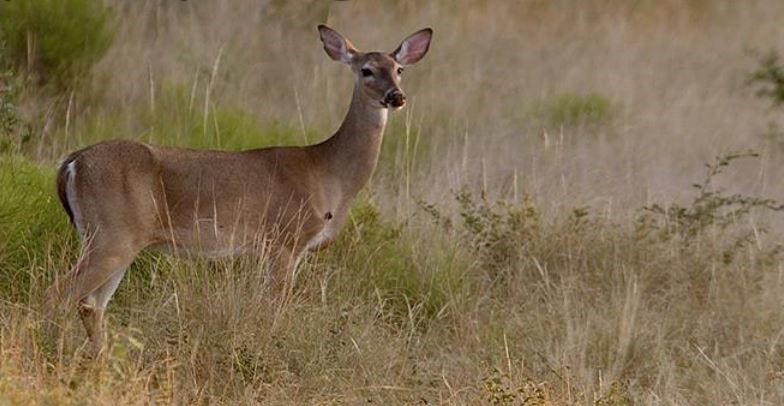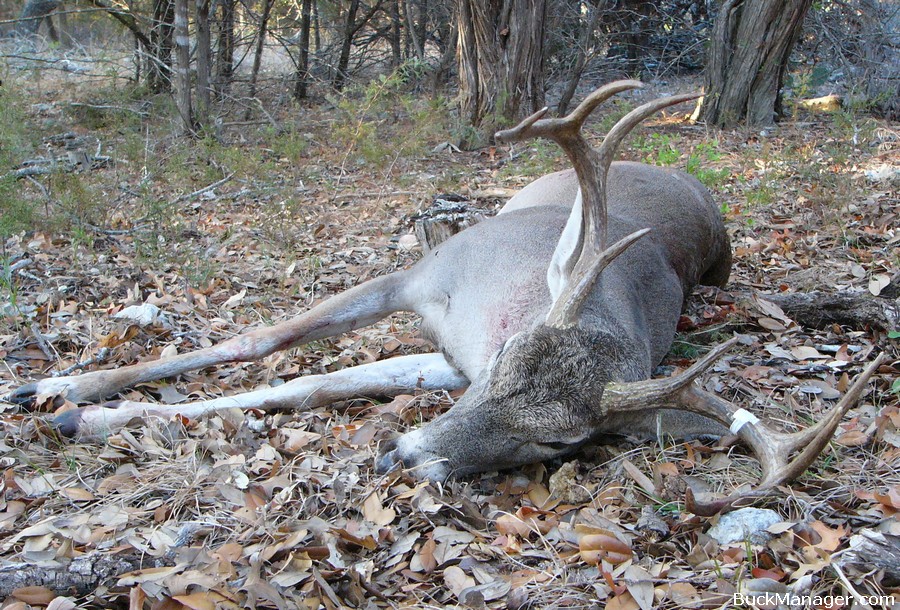CWD: Urine Trouble?
Chronic Wasting Disease(CWD) is a highly contagious disease that shortens the lives of white-tailed deer and other native cervid species. The disease can be passed from animal to animal and deer can pick it up in a contaminated environment, but can the use of commercially available deer urine by hunters spread CWD to new areas?
It’s a question that many are focused on since CWD causes the mortality rate of infected herds to increase, resulting in lower deer numbers that ultimately threaten socially and economically important game species.
Deer Urine
The commercial sale of urine, specifically white-tailed deer urine, is a big business. Hunters often turn to any perceived advantage during the hunting season to put their tag a buck. During the breeding season, the urine of does that are in estrous smells different, attractive to a buck.
Retailers offer this “love potion” that can be found bottled on shelves and online from a variety of companies (that also sell direct to consumer) that maintain captive whitetail deer herds for the purpose of collecting urine. Distributors say deer urine will not spread CWD elsewhere. Researchers say urine contain CWD prions.
CWD
Every week we read about CWD. It’s been found here or there, research is being performed to learn about how to limit/stop the spread, and hunters are being asked by states to have their harvested animals tested and to comply with cervid carcass restrictions.
Say what you want about CWD, but the disease really has not been around long enough for anyone to know what it fully capable of or what the end-game will be. No doubt, folks are making educated guesses.
There is no easy answer, no quick fix, especially when private companies are up against public agencies.

Deer Urine, CWD Spread Debated
Source: Dr. Krysten Schuler, a wildlife disease ecologist at the Cornell University College of Veterinary Medicine in New York, said she isn’t convinced that urine-based deer lure doesn’t pose a risk of spreading the disease.
Schuler, who has researched chronic wasting disease since 2002, said there is no oversight of urine products, and facilities aren’t required to participate in a certification program to test all natural mortality for the presence of CWD. She added that multiple studies have shown CWD prions are shed in urine, and relatively early — within the first six months of infection. A diseased animal can live for a year or more before showing any clinical signs of CWD.
“If you had a sick deer but it looked fine, and you collected the urine for a year and then it dies, and then you find out it had CWD, those products already went out there for a year, and there’s no way to trace it back,” Schuler said.
Adding to her concern is the fact that urine used for lure is collected from captive deer over a grate. In addition to urine, feces and saliva also go through the grate, possibly elevating the level of prions in the bottled product.
“Urine products aren’t pure,” Schuler said.
According to Hunnicutt, the saliva, feces and urine have the lowest concentrations of CWD prions, compared to the brain and spinal cord. He said it would take 33,000 gallons of urine to equal the infectivity of a portion of brain from a deer weighing one gram.
“The urine collected is free and clear of CWD prions. Period,” Hunnicutt said.
There are more than 1,000 deer farms in Pennsylvania — second in number only to Texas — that cater to several markets, including raising quality breeding stock, collecting urine for the scent industry, selling bucks for hunting purposes, and selling antlers.
Pennsylvania also is home to the largest natural urine production facility in the country, which is owned by Amish farmers and played a role in developing the Archery Trade Association monitoring program.
According to Glenn Dice Jr., president of the Pennsylvania Deer Farmers Association, the captive-deer industry has an impact of $7.9 billion to the nation’s economy. While Dice didn’t know the economic contribution of the deer lure industry, he said a ban on urine-based products would be devastating to the facilities that comprise that market.
Rather than look at a ban on deer urine, Dice suggested state wildlife agencies focus on cervid parts that contain the highest CWD risk.
“Expert CWD researchers consider urine the lowest risk of transmitting CWD. These experts indicated that muscle tissue from a de-boned deer carcass is extremely more infectious, potentially 100,000 times more infectious, than urine,” Dice said. “It’s curious PGC’s interest in discussing a potential urine ban, however, a significantly more infectious deer by-product, de-boned meat, is not being discussed.”
Laroche, of the Pennsylvania Game Commission, acknowledged that urine might pose a lower risk of spreading CWD compared to the movement of deer parts and even live animals throughout the state. But that doesn’t mean he isn’t concerned about urine-based deer lure and the threat it poses to the resource and hunting in Pennsylvania.

I have looked up brown colored deer several times this morning-with no results… but I know what I saw. There’s a game preserve a few towns away that I’ve gone to all my life. Over the years a wooden walkway was built, taking you through the preserve. My young sons were disappointed that we hadn’t seen any deer. I said maybe they’re hiding. Stepping off walkway I spread the bushes aside…looking into each others faces was a huge muscular chocolate brown deer with whispy hair-not thick-just scattered all over her.
There was a clearing-many laying around, some standing. Some of the standing ones began snorting and pawing the ground. That gorgeous brown one seemed calm, just staring into my eyes. It was an awesome experience. It WAS a deer-I had never seen one so huge and muscular-but it was a deer-a female I would say-no antlers. I had just seen that video of the deer standing on hind legs, pummeling the hunter, so I let bushes close and kept walking with my kids. The only brownish deer I found on web were spotted ones in Wisconsin and Texas.
Any ideas? This happened in Maine-close to the ocean; it was so big and muscular, shaped more like a horse-but it was a DEER! Wish I had picture; I would have had let go bushes to take a pic-Guess the memory was my gift. I stopped writing this for few min. to look up reindeer since their brown-not even close, not caribou either. Years ago, a friend had a brown Arabian horse with that whispy hair on top of it’s coat. Oh, well, a mystery I guess-what a great experience.
J.C., I’m not sure what you saw. I can only assume that it was a white-tailed deer or possibly a moose since they are found there. Whitetail subspecies do get substantially larger at higher latitudes, so you may have just seen a big, mature “swamp donkey” of deer. Sounds cool and we all wish you did have a picture!
Who is Hunnicut? A deer farmer? I think the relative concentrations of prions in urine vs. brain tissue is completely irrelevant, unless hunters are spreading deer brain matter all over the woods. I think we have to be responsible as hunters, and do everything possible to not spread CWD. It’s just not worth the risk, considering the devastating consequences. In just the last few decades we’ve seen cervid hunting decline in an alarming number of states.
It’s sad that there are people willing to sacrifice our kid’s hunting inheritance to make money for themselves. Our grandfathers wore red plaid in the deer woods, no camo, no cover scents, no deer lure, no bait, and they killed plenty of deer. People these days are too lazy to improve their hunting skills, and resort to these shortcuts instead. Learn to be a real hunter, and you won’t need deer lure, etc.
John B., I agree with you. I think having the long-game in mind is much more important than a short gain. It’s better to be conservative and learn how we can improve hunting rather than be too aggressive and later learn where we went wrong.
I have been running a 5,000 acre lease for 30 years with 28 hunters. I use deer urine on a lot of it. When deer season opens I may use 1 or 2 jars of doe-in-heat sent just through the deer season and other doe scent just be for the rut starts. Maybe someone would like to check our deer this season.